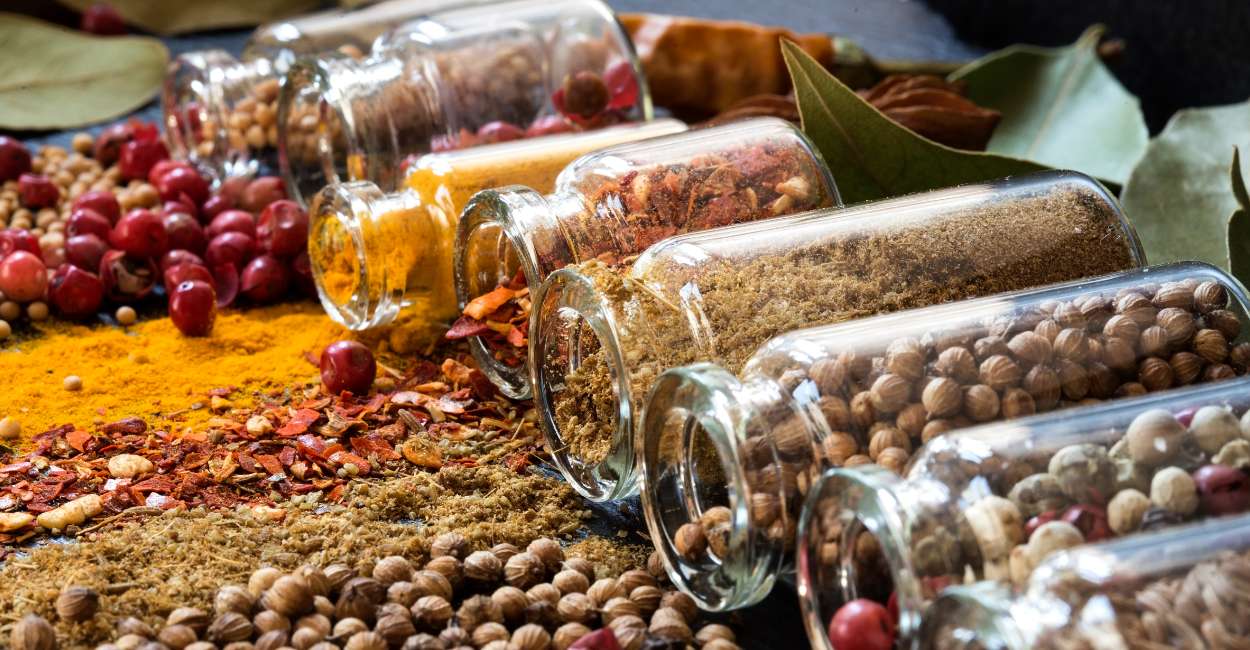
Spices have been an integral part of human civilization for thousands of years, adding flavor, aroma, and depth to culinary creations. But have you ever wondered where these magical ingredients come from? The journey of spices is a fascinating tale of exploration, trade, and cultural exchange that has shaped the world’s cuisines.
In this article, we will delve into the origins of spices, tracing their roots across different continents and exploring the historical spice trade routes.
The Cradle of Spice Civilization: Asia
The story of spices begins in the lush landscapes of Asia, where many of the world’s most cherished spices originate. Countries like India, Indonesia, China, and Sri Lanka have been at the forefront of spice cultivation for centuries. Some of the most iconic spices, such as black pepper, cardamom, cinnamon, and turmeric, have their roots deeply embedded in the soils of these regions.
India, known as the “Land of Spices,” has been a key player in the spice trade since ancient times. Spices like cumin, coriander, and fenugreek have been cultivated in India for over 4,000 years, and Indian cuisine is renowned for its rich and aromatic spice blends.
The Spice Islands: Indonesia
The Spice Islands, also known as the Moluccas, are a group of islands in Indonesia that played a pivotal role in the spice trade. These islands were the exclusive source of nutmeg and mace, highly sought-after spices in medieval Europe. The Dutch and the Portuguese competed fiercely for control over these valuable spice-producing islands during the Age of Exploration.
The Silk Road: Spice Exchange between East and West
The Silk Road, the ancient network of trade routes connecting East and West, served as a conduit for the exchange of not only silk but also spices. Spices like ginger, cinnamon, and cloves were transported along the Silk Road, linking the spice-rich regions of Asia with the spice-hungry markets of Europe and the Middle East.
Spice Trade in the Middle East
The Middle East has been a crossroads of spice trade for centuries. Arab traders played a crucial role in bringing spices from Asia to the Mediterranean, introducing flavors like saffron, cinnamon, and cloves to the cuisines of the region. The bustling spice markets of cities like Istanbul and Cairo became vibrant hubs of cultural exchange.
The European Spice Craze: Age of Exploration
During the Age of Exploration, European powers embarked on maritime expeditions to find direct sea routes to spice-producing regions. Christopher Columbus, Vasco da Gama, and Ferdinand Magellan were among the explorers who sought to bypass the Silk Road and establish direct trade routes with spice-rich lands. This era marked the beginning of global spice trade as we know it today.
Conclusion:
The origins of spices are deeply intertwined with the history of human civilization, reflecting the spirit of exploration, trade, and cultural exchange. From the spice gardens of Asia to the Spice Islands of Indonesia, and the spice markets of the Middle East to the European quest for direct trade routes, the journey of spices is a captivating narrative that has shaped the world’s culinary landscape.
As we savor the flavors of diverse cuisines, let us appreciate the global tapestry of spice origins that enrich our dining experiences.
FAQs
Q1: What is the primary origin of spices?
A1: Spices have diverse origins, but many of them trace their roots back to Asia. Countries like India, Indonesia, China, and Sri Lanka are known as spice-rich regions, cultivating a wide variety of flavorful spices.
Q2: Can you provide examples of spices that originated in India?
A2: Certainly! India is often referred to as the “Land of Spices.” Notable spices that originated in India include black pepper, cardamom, turmeric, cumin, coriander, and fenugreek.
Q3: What role did the Spice Islands play in the history of spice trade?
A3: The Spice Islands, located in Indonesia, were historically significant for spices like nutmeg and mace. European powers, particularly the Dutch and Portuguese, engaged in intense competition for control over these islands during the Age of Exploration.
Q4: How did the Silk Road contribute to the spread of spices?
A4: The Silk Road, an ancient trade network connecting East and West, facilitated the exchange of spices like cinnamon, ginger, and cloves. This network played a crucial role in introducing diverse spices to different regions along its routes.
Q5: Which Middle Eastern spices have had a significant impact on global cuisine?
A5: Middle Eastern spice markets have introduced flavors like saffron, cinnamon, and cloves to the world. These spices have become integral components of various cuisines and are widely used for their aromatic and distinct tastes.
Q6: What sparked the European interest in spices during the Age of Exploration?
A6: The European interest in spices during the Age of Exploration was primarily driven by the desire to establish direct sea routes to spice-producing regions. Explorers like Christopher Columbus and Vasco da Gama sought ways to bypass traditional land routes, aiming to secure direct access to valuable spices.
Q7: Are there spices that are exclusive to certain regions of the world?
A7: Yes, certain spices are region-specific. For instance, nutmeg and mace were historically exclusive to the Spice Islands in Indonesia. Each region has its unique set of spices that contribute to the diversity of global culinary traditions.
Q8: How has the global spice trade influenced cultural exchange and culinary traditions?
A8: The global spice trade has been a catalyst for cultural exchange, blending flavors and culinary traditions. Spices have played a significant role in shaping the unique characteristics of various cuisines, creating a rich tapestry of global culinary heritage.
